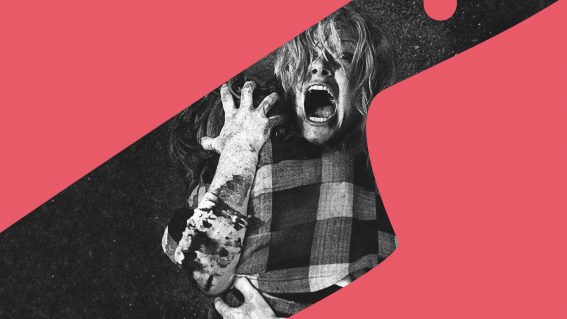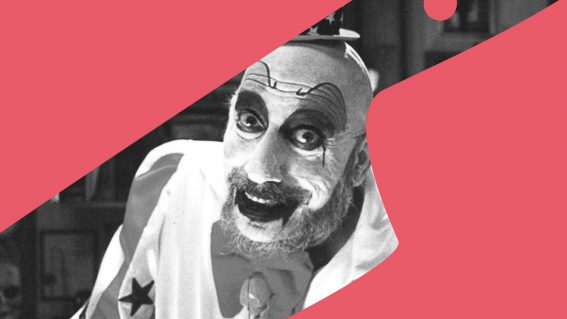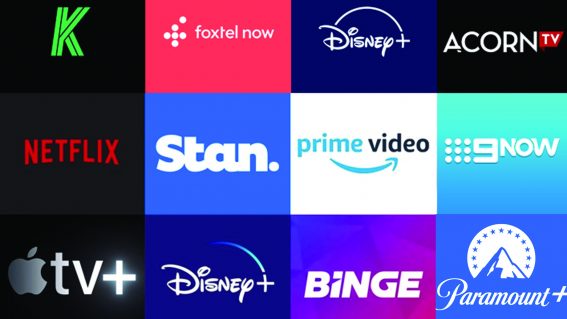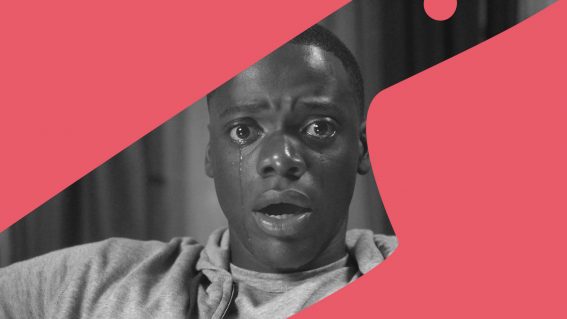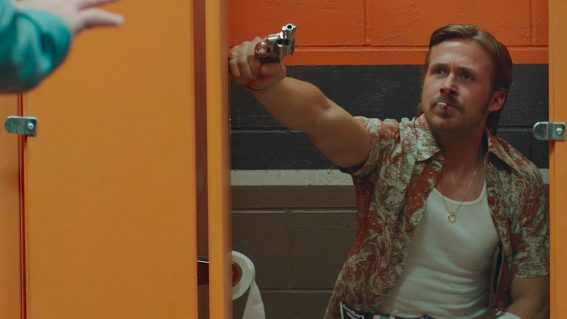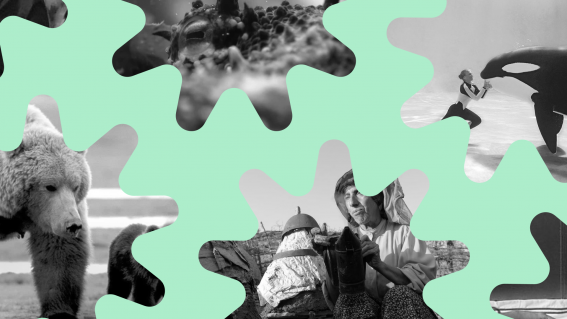‘Pete’s Dragon’ Director on Guiding a Mega-Production of This Size

Disney’s live-action Pete’s Dragon is now in cinemas. Since our extensive, hour-long, chat with director David Lowery we’ve run two interview excerpts – talking shooting in New Zealand and nostalgia, kids, and respecting their intelligence. In this, final, installment, Lowery digs deeper inside the production, explaining what it’s like to work on a film of this scale, how to go about finding the right people to work with, bringing a dragon to life, and how not to end up like the director of Fantastic Four.
FLICKS: Looking at the films you’ve worked on previously, it’s not a logical progression, ‘Pete’s Dragon’ – if you’re just looking at your credits.
DAVID LOWERY: At the list. It would’ve made no sense to me either.
Obviously, that’s not representative of a person. It’s just a list of credits – and it’s a list of luck as well, right? Because it’s like, “This thing went, this one didn’t. This thing went, this one didn’t.”
A hundred percent. For various reasons, I kind of made every movie I was developing. So, my first feature St. Nick was the 12,000 dollar movie, which led to Ain’t Them Bodies Saints, which led to this. And there wasn’t anything that I was trying to make that didn’t happen, or that would’ve made more of a logical leap. I think that when you look at the three films, they’re all kind of the same. They really are, in some ways more obvious than others. They all are kind of telling the same story, and they’re all set in the same world.
It’s only in terms of looking at the size of the budget, or the fact that one of them is a Disney movie, or that one of them’s R and one of them’s PG, that the differences feel overt. But once you take them all in and look at them as a complete body of work, I think they make total sense.
I had one other film that I was going to do before Pete’s Dragon that I let go because Pete’s Dragon was just happening faster than we thought it would happen. And I think if I had made that, it would’ve been an even crazier jump. And that movie wouldn’t have fit. I’m glad I didn’t make it because it wouldn’t have fit. And it was a movie that was easy to let go of because it just didn’t feel right. And this one did.
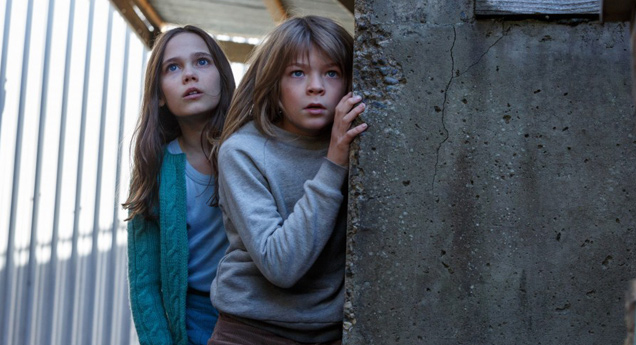
You mentioned that you spent a year working on the script. As you got the director’s job, that must have suddenly become like, “God, this is me for the next chapter of my life,” right? Do you kind of have to just be ready to walk away from what’s actually happening in your life when you’re working in development like this?
Yeah. You do, but luckily for me, I have no life. That’s the awful part, is that all I do is my work. To the chagrin of my family. And I had to adjust to the fact that I would only be working on one thing for that period of time. That’s tricky, because I usually have a lot of things going on and it usually doesn’t take me that long to make a movie. I mean, granted, I’ve only made two features, but both of those took less than a year from start to finish. So, doing something that was going to occupy pretty much every waking hour for a grand total of three years and change, was a challenge for me and took a little bit of adjusting to. But you want the movie to get made, you want it to be good, you want it to turn out, so you just do the work that’s necessary. And part of that work is just spending a lot of time on it.
It’s not like ‘Pete’s Dragon’ has no limitations in what you’re able to do. But it doesn’t have the limitations that a smaller film does, which do seem to help generate the right results. The limitations are kind of what funnels filmmakers in certain directions. When you can do almost anything, can you ever switch your brain off in that process or is it just, the whole time, going?
It’s always going. It’s still going. I can’t watch the movie now, because I would just be wishing I could keep working on it. But the surprising thing is that there are tremendous limitations. I went into the movie expecting to not have any. I mean, obviously, this isn’t that big of a budget, in terms of Disney movies [$65 million, according to Box Office Mojo]. This is on the smaller end of things. It’s not like we had unlimited means at our disposal. But at the same time, we had a comfortable sphere in which to work. But even within that, you’re still running out of time every single day. There are always the shots that you want to get that you don’t have time for, the compromises you have to make on a creative level. And once you get into post-production… I would happily have spent another year on the visual effects to get the visual effects as good as they possibly could’ve been. But that’s not on the cards. You can’t afford it, it doesn’t make sense to delay the movie for another year.
So, you just squeeze it all into the time that you have and you have your release date. You know, you have to finish the movie by a certain date. And that’s a limitation. And that does still provoke the same sort of creative responses that the limitations of a micro-budget movie would compel you to do. You realize that a certain shot is never going to look the way you want it to for various reasons, so you come up with a creative solution to mitigate that fact. Or you are having trouble with the dragon in a certain scene and so you go scrounging through the trim bin and find some outtake that gives you an alternate angle that was never intended for that but nonetheless, will do the trick for what you need. There are still all those creative solutions you have to be looking for and open to and ready to come up with because, in spite of the scale of the production, it is full of nothing but limitations. And that’s just making movies. It doesn’t matter how big or small they are. It’s just every movie is an exercise in overcoming your limitations.
This one’s obviously vastly expanded your experience as well, right?
Yes. Now I know how to use a technocrane and I love them.
Uh oh, is this the point of no return?
Yeah, it’s like, “Man, I want to use these all the time. They’re great.”
I’m utterly unfamiliar with the original ‘Pete’s Dragon’. How much DNA has survived in the way that the Elliott is presented?
Very little. I haven’t seen the original Pete’s Dragon since I was six or seven, so my memory of it is all I had to go on.
So, you’ve got something in there that’s not accurate.
Exactly.
You’ve got kind of an emotive response memory?
I know what he looks like, I’ve seen pictures of him. By and large, he’s completely new. I just drew a picture of what I wanted a dragon to look like and we went from there. There’s certain things that are carry-overs and I wouldn’t say they’re intentional, but certainly are similarities. He’s clumsy, he’s goofy, he’s got a big belly. He has a giant lower jaw. Those are things that are there in the original and that I sort of liked about that design. But we never went into it looking to create a photo-real version of the 1977 Elliott. I basically just wanted to make a dragon that I felt was unique and original and that I would fall in love with. And that would, hopefully, go down in history as a great cinematic dragon. And also, as a great character. And any similarities to the original were icing on the cake for fans of the original. And if you’re not a fan of the original, then I don’t think you’re going to notice much in the way of corollaries.
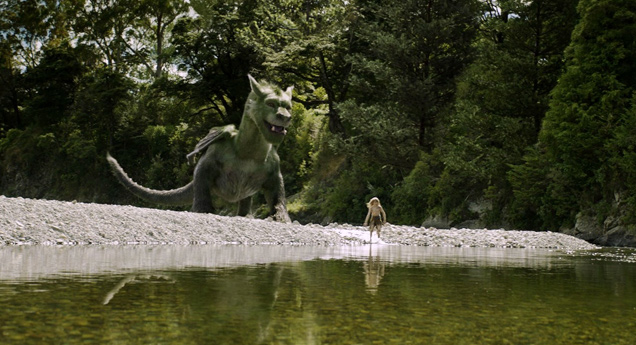
As you bring the character to life over a really long period of time, how does that actually work as a director? Are you having weekly meetings, daily meetings with your Weta team in that huge middle bit between sketch and finished film?
Yeah, so you start off with the sketch. Then you give that sketch to concept artists who come up with a more refined version of it. Then Weta takes those and builds a skeleton, which turns into a puppet that they can animate. And then, you start shooting the movie. So, the visual effects side of things goes away for a little bit. Every now and then, they’d send me something on my phone and I’d look at it.
As we were shooting, we were editing, and in a couple sequences they would start to roughly animate Elliott into the shots. But throughout the entire production, you’re not really thinking too much about the finished product. As soon as production’s over, you go into post and start editing and the first thing they cut are any scenes that have the dragon. You just try to get those roughed together so you can give them to Weta and they can get to work. And once they get to work, you’re having visual effect reviews with them at least once a week. Usually three times a week. Towards the end, you’re having them every day. And in those reviews, you start off just watching rough animation.
Gradually, those rough animations turn into more finessed animation. Then they’re turned into actual rough renders with fur and lighting. And then at the end of the day, it’s the finished shots. And there are shots in the movie that we spent close to a year finessing.
When you finally sign off on it, you’re sort of saying, “Okay, that’s as good as it’s going to get. That’s exactly what I wanted. That’s what’s going to be in the movie.” There’s a lot of weight on the approval process and you want to really make sure you’ve made everything work to the fullest extent possible. And so, it takes a while. Some shots would come in and go from animation to approval very, very quickly. Some shots, we never even felt like we need to see the animation. We’re like, “just finish them”. There’s one shot where Natalie looks up in the trees and sees some birds fly by. And that was one that like, that took a week. You know, less than a week. One review and we’re like, “Great, done.” But other shots just took forever. They took a long, long time and you really have to train yourself to see things in a new way in order to give notes on a shot.
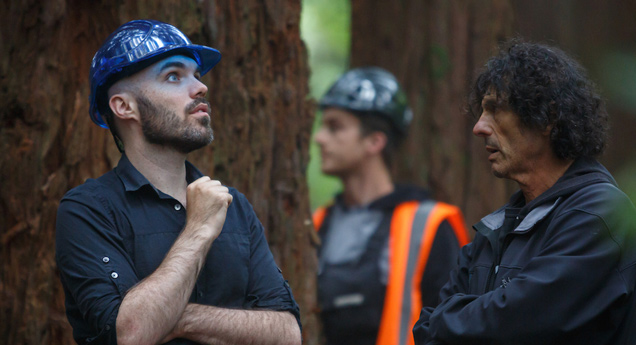
Your comments about needing to rely on the people that you work with about making decisions and stuff… I appreciate if you don’t want to make a comment about this but when I was reading the scuttlebutt around Josh Trank on ‘Fantastic Four’, it seemed like a very understandable position for a human being to find themselves in. Like, being unable to make a decision because it’s constantly required. So, congratulations on making it through this! I’m not saying you’re a novice director, but until you put yourself in this position – in the epicenter of this giant tornado – you just generally can’t know, what’ll happen, right?
It’s crazy and you’re putting yourself in the epicenter of tornado for weeks and weeks and weeks and weeks. So, even if you make it through the first two weeks and feels it’s okay, by week six, you’re going to be worn out. And I read those same articles about Fantastic Four that everyone else did and I don’t know what actually happened in that production that it went so astray. But I definitely can see how someone might buckle or someone might not want to come out of their trailer. Because the pressure is incredibly intense and you can’t prepare yourself for it. It’s always going to be more than you expect. And there were plenty of days where I just wished I could sleep in and not get out of bed but you have so many people depending on you and so many people that need you. You owe it to them not to give up. You owe it to yourself as a director who hopes to have a career, not to give up. And you owe it to the movie because you ultimately are the one guiding the movie and you want to make a good movie. So, you do. You get out of bed, you go deal with the questions that need to be answered and the issues that have arisen. And I often find that the mornings are the worse. You wake up and just feel that everything’s going to be terrible. But then once you get to set, and you get the first shot done, you get back in the swing of things, you start to feel better. By the end of the day, you feel great and you’re ready for the next day
And then of course, you wake up the next morning and you feel horrible and the same thing happens over and over again. But you just have to figure out your own rhythm and there’s no easy way to do it. It’s a lot of hard work. It gets really arduous, but at the same time it’s an incredibly lucky position to be in and it would be foolish to disregard that and to cast it aside because things are tricky, difficult, or you’re having to deal with personalities conflicting or whatever the case may be. It’s still a heck of a lot of fun. So, actually, I don’t know. I can understand exactly how this movie could’ve gone wrong and I can sympathize with filmmakers who have found themselves in a position where a film is going wrong. But at the same time, I think that every director in this position owes it to themselves and to the movie and to their crew to get that movie made. And at the end of the day, you’re going to get to sleep when you’re done. And I certainly have, so I’m ready to go again. Ready to make another one.
From the outside looking in, there are a couple different jobs with being the director. That’s all your preparation. But then, once you’re in the thick of it, your job is to almost make instinctive responses, right? Not to say that they’re not considered, but when you’re weeks into the shoot and you’re exhausted, the reason you’re there is to make fast decisions.
It is tough sometimes to make fast decisions. But that is your job. Your job is to say yes or no to things. It can boil down to that. And something that the director James Gray once said – he’s a director I admire immensely – he said, “If you do your job right, and you cast the right people, and you hire the right department heads, and you have a good crew, you could not show up ever on a single day of principle photography and the movie would still turn out 98 percent good because you’ve hired all the best people. And your job as a director is A, do that and B, then be there everyday to get it to 110 percent, rather than 98 percent.” And I agree with that. But that extra 12 percent is really hard. It’s really taxing. And it’s important to have a great crew, a great cast, department heads who you trust. This goes back to working with people who you want to hang out with at the end of the day, because those are people who you won’t want to let down. They’re not going to let you down. And they make it easier for you to get up in the morning when the going gets tough.

How do you do that when you hop around the world? Obviously, you can’t bring everyone with you. So, you’re going to have to hire locally. There are production reasons why certain people, well, a certain proportion of jobs need to be allocated. And I guess with any film, you’re going to be told who you’re working with to some extent.
To a certain extent, yeah.
So, how do you gauge who among the potential crew is a good one to come aboard?
You know, when you’re making movies of this scale, it’s just a fact that you’re never going know everybody’s name. There’s always going to be someone out there – whether it’s a guy driving trucks or someone on the crew who you’re just not going to know. Or a couple people. I say that because you may not know them, but you probably know the person who hired them. Or the person who hired them, knows someone who doesn’t know you. And so, basically what you do is you start with the departments closest to you as a director. You hire your production designer – who’s done all my movies – and you get the cinematographer you like.
And you have a line producer who you really trust. In this case, we had Barrie Osborne, who has made many movies here. I got along great with Barry. I loved working with him. He and I have similar sensibilities and similar dispositions and I figure that if someone passed muster with him, I’d be okay with them too. So, because he was hiring all the crew and he’s worked in New Zealand so frequently over the years, I pretty much was confident that if he told me they were good, I would be inclined to hire them.
That’s how you do it. You just find people that you trust who can guide you towards bringing that big family together. And you find a few key roles that you put the people that you’ve worked with before in, so that you do have a little bit of comfort knowing that the sets are going to look the way you want them to look because you’ve worked with that production designer before. Or the music’s going to sound a certain way because you’re working with the composer you’ve worked with before. When you’re working with new people, you just kind of go by word of mouth and you let someone who’s been there before, who you trust, guide your hand in the hires
I’m guessing that the history of mega productions here lends itself to a fairly similar kind of family working on a bunch of films because it’s such a unique environment, and if you don’t fit, you’re probably not coming back.
It’s true. The bad eggs weed themselves out pretty early on. You find that all over the world, wherever you’re making movies. Word of mouth travels fast and if you don’t cut the mustard, you’re not coming back. So, in this case, it really was a tightly-knit group of people. Everyone in the crew knew each other, they’d all worked together for many years. Most of them had spent the past three years doing The Hobbit. And it was fun to go watch the behind-the-scenes documentaries on The Hobbit after we’d started production. Because I’d seen them all before, but then I went back and looked again and was like, “Yep, I know that person, I know that person, I know that person, I know that person.” And so it really was fun to see them all, see how everyone has that history together and that rapport. And that’s a great tool to have at your disposal. A crew that works well together is a wonderful, wonderful thing.
Through being here to shoot, and through working with those crew, it must be nice just ducking into The Lord of the Rings / Peter Jackson Land, for a while, right?
It totally is. I mean, a huge part of my filmmaking education came from the behind-the-scenes documentaries on the original Lord of the Rings trilogy. So, getting to come here and see all of these things, like seeing Stone Street Studios for the first time… I was very familiar with it all ready because I’d seen it in those documentaries and I love that legacy and am happy to just tip-toe around the edge of it.
‘Pete’s Dragon’ movie times and 3D movie times
Watch the ‘Pete’s Dragon’ trailer

